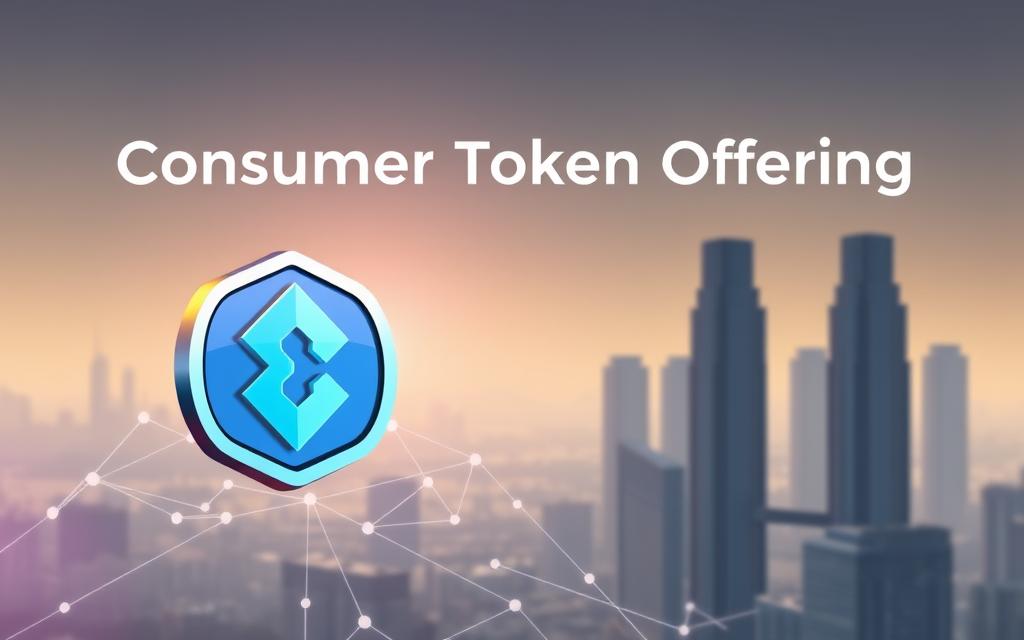The term CTO is commonly associated with Chief Technology Officer, but in the cryptocurrency space, CTO stands for Consumer Token Offering. This concept represents a significant evolution in blockchain-based fundraising methods, focusing on utility and customer engagement rather than speculation.
Consumer Token Offerings are designed to comply with existing regulations, reducing legal risks for projects. By issuing tokens to consumers, businesses can raise funds while providing value to their customers. This approach differs from other token offerings like ICOs and STOs, which often focus on investment opportunities.
The blockchain technology underlying these tokens ensures transparency and security, making CTOs an attractive option for both businesses and consumers in the cryptocurrency ecosystem.
Understanding Consumer Token Offerings in the Crypto World
Consumer Token Offerings (CTOs) are revolutionising the way businesses interact with their customers in the cryptocurrency space. Unlike traditional fundraising methods that focus on investors, CTOs prioritise customer involvement and utility.
Definition of CTO: Consumer Token Offering, Not Chief Technology Officer
In the context of cryptocurrency, CTO stands for Consumer Token Offering, a fundraising strategy that distributes tokens to customers on a blockchain network. This approach is distinct from the more familiar acronym for Chief Technology Officer. CTOs are designed to facilitate direct interaction between businesses and their customers, rather than investors. By doing so, they shift the focus from capital generation to building a community of users.
The Purpose and Function of Consumer Tokens
Consumer tokens are created to provide access to products, services, or content within a project’s ecosystem. Their primary purpose is to be used, not traded, thereby creating value through utility rather than speculation. This approach differs significantly from traditional token sales like Initial Coin Offerings (ICOs) and Security Token Offerings (STOs), which often focus on investor returns. By emphasising customer engagement, CTOs foster a stronger connection between businesses and their customers.
| Key Features | CTOs | ICOs/STOs |
|---|---|---|
| Primary Focus | Customer Engagement | Investor Returns |
| Token Utility | Access to Products/Services | Speculative Investment |
| Community Building | Strong Customer Connection | Limited Customer Interaction |
As highlighted by the table, CTOs offer a unique approach to fundraising and customer engagement in the cryptocurrency space. By focusing on utility and customer involvement, businesses can build a loyal community of users, setting themselves apart from traditional fundraising methods.
“The key to successful CTOs lies in their ability to create a mutually beneficial relationship between businesses and their customers, fostering a community that drives growth and adoption.”
The Evolution of Cryptocurrency Fundraising Methods
The cryptocurrency landscape has witnessed significant evolution in fundraising methods over the years. Initially, the industry relied heavily on Initial Coin Offerings (ICOs) as a primary means of raising capital.
Initial Coin Offerings (ICOs): The First Wave
ICOs emerged around 2017 as a novel way for startups to raise funds by selling utility tokens that could be used on their platforms or applications. This method attracted a diverse group of investors seeking potential returns on their capital. However, the lack of regulatory oversight led to numerous scams and failures, prompting critical examination by regulators such as the U.S. Securities and Exchange Commission (SEC).
Security Token Offerings (STOs): The Regulated Approach
In response to the regulatory challenges faced by ICOs, Security Token Offerings (STOs) were developed. STOs are governed by securities laws, as they issue security tokens that represent ownership in a company or asset. This approach brought much-needed compliance with regulatory requirements but limited participation to accredited investors.
Consumer Token Offerings: The Customer-Centric Model
The limitations of both ICOs and STOs led to the emergence of Consumer Token Offerings (CTOs) as a customer-centric alternative. CTOs focus on utility and compliance, providing a more sustainable and user-focused fundraising model in the blockchain space. This evolution represents a natural progression towards more regulated and user-friendly fundraising methods.
What is a CTO in Crypto: Core Characteristics and Framework
Consumer Token Offerings (CTOs) have emerged as a pivotal fundraising method in the cryptocurrency space, focusing on utility-driven tokens. Understanding the core characteristics and framework of CTOs is essential for businesses and consumers alike.
The Five Fundamental Principles of CTOs
The Brooklyn Project, a cooperative endeavour headed by ConsenSys, has established five fundamental principles for CTOs. These principles are designed to ensure equity, transparency, and consumer protection in token distribution and governance.
- Utility Focus: Tokens are designed to be used for purchasing goods and services, rather than speculative trading.
- Transparent Governance: Clear guidelines are established for the administration and control of the token.
- Equitable Distribution: Tokens are distributed equally among customers.
- Conflict Resolution: Processes are developed to address disagreements or problems.
- Security Audits: Associated smart contracts and apps undergo security inspections to safeguard users.
The Brooklyn Project’s Consumer Token Framework
The Brooklyn Project’s Consumer Token Framework has become a standard reference for designing and implementing compliant CTOs. This framework outlines best practices for token launches, ensuring equity and openness in token distribution, governance, and consumer protection.
| Framework Component | Description |
|---|---|
| Utility Focus | Tokens are used for goods and services |
| Transparent Governance | Clear guidelines for token administration |
| Equitable Distribution | Tokens distributed equally among customers |
The framework supports the development of trust between regulators and token owners, ensuring that tokens provide real value to consumers rather than serving as speculative investments.
How Consumer Token Offerings Work in Practice
The practical implementation of Consumer Token Offerings is a complex process involving several key steps. It begins with a thorough understanding of the target market, competitors, and project objectives.
Token Design and Development Process
The token design process involves determining the utility functions, technical specifications, and economic models for the consumer tokens. A well-designed token is crucial for the success of the CTO, as it directly impacts the project’s ecosystem and user engagement.
Distribution Mechanisms and Limitations
CTOs utilise various distribution mechanisms such as airdrops, limited sales, and earned allocations to distribute tokens fairly and openly. Limitations are often placed on token transfers to prevent speculation and ensure that the tokens serve their intended purpose within the ecosystem.
Governance and Transparency Requirements
Successful CTOs implement robust governance and transparency measures, including clear documentation, regular updates to token holders, and mechanisms for community input. This fosters trust and ensures that the project remains accountable to its community.
As stated by a leading expert, “Transparency is key to the success of any CTO, as it builds trust and credibility with the community.” Effective governance and transparency are thus essential components of a successful Consumer Token Offering.
Key Benefits of CTOs for Businesses
Consumer Token Offerings (CTOs) are revolutionising the way businesses interact with their customers. By offering tokens that provide tangible benefits, CTOs enable companies to build stronger, more meaningful relationships with their clientele.
Building Stronger Customer Relationships
CTOs help businesses foster direct engagement with their customers by offering tokens that provide observable advantages, such as discounts or priority access to goods and services. This approach not only enhances customer loyalty but also encourages active participation in the ecosystem.
Creating New Revenue Streams
By selling tokens directly to customers, businesses can generate instant cash flow and create new revenue streams. This model is comparable to a product pre-sale, where customers pay upfront for future benefits, thereby providing businesses with the capital needed to drive growth and innovation. For more information on CTOs, you can visit Debut Infotech’s blog on Consumer Token.
Reducing Regulatory Risks
CTOs are designed to meet regulatory requirements, reducing the legal risks associated with other fundraising methods like Initial Coin Offerings (ICOs). By structuring tokens as utility tokens rather than securities, businesses can mitigate the risk of regulatory scrutiny, ensuring a more stable and compliant fundraising process.
| Benefits | Description | Impact |
|---|---|---|
| Stronger Customer Relationships | Tokens offer tangible benefits, enhancing customer loyalty | Increased customer retention |
| New Revenue Streams | Direct token sales generate instant cash flow | Improved financial liquidity |
| Reduced Regulatory Risks | Utility-focused token design minimizes legal risks | Enhanced compliance and stability |
Advantages of CTOs for Consumers and the Wider Community
The advantages of CTOs extend beyond the businesses that issue them, offering value to consumers and the wider community. By providing a more inclusive and transparent way to participate in blockchain projects, CTOs create a positive impact on the ecosystem.
Democratised Access to Blockchain Projects
CTOs enable the entire public to participate in blockchain-related businesses, democratizing access to these projects. This allows more people to invest and profit from cutting-edge blockchain enterprises, regardless of their accreditation status or investment capacity.
Transparency and Trust in Token Systems
One of the fundamental tenets of CTOs is transparency. The Brooklyn Project’s architecture ensures that all participants are aware of the processes involved in token creation, distribution, and governance. This openness promotes trust and accountability, fostering a good rapport between companies and customers.
Ecosystem Growth and Innovation
By focusing on practical use cases and user engagement, CTOs contribute to the growth and innovation of the blockchain ecosystem. New projects that plan to launch CTOs are inclined to think about their token’s utility potential from the outset, reinforcing the benefits of tokenization and blockchain technology.
| Benefits of CTOs | Description |
|---|---|
| Democratised Access | Allowing anyone to participate in blockchain projects |
| Transparency and Trust | Clear documentation and governance processes |
| Ecosystem Growth | Fostering innovation and utility in blockchain projects |
Comparing CTOs with ICOs and STOs
CTOs, ICOs, and STOs represent different approaches to fundraising in the cryptocurrency space, with unique advantages and regulatory considerations. While all three strategies aim to raise money for cryptocurrency-related initiatives or businesses, their strategies and target markets are very different.
Target Audience and Participation Requirements
The target audience for CTOs, ICOs, and STOs varies significantly. ICOs typically target speculative investors looking for high returns, often with a higher risk tolerance. In contrast, STOs focus on accredited investors, providing a regulated investment opportunity. CTOs, however, aim to engage actual users and consumers, focusing on the utility of the token within a specific ecosystem.
Regulatory Approaches and Compliance
Regulatory approaches differ across the three models. ICOs often operate in a grey area, with less stringent regulatory oversight. STOs, on the other hand, are heavily regulated, complying with securities laws to provide a secure investment opportunity. CTOs navigate regulatory concerns by focusing on token utility rather than investment potential, thus adopting a different compliance approach.
Token Utility vs. Investment Potential
The emphasis on token utility in CTOs contrasts with the investment potential highlighted in ICOs and STOs. While ICOs and STOs are often used as investment vehicles, CTOs are designed to facilitate the use of tokens within a particular platform or service, enhancing user experience and participation.
Real-World Examples of Successful Consumer Token Offerings
The rise of Consumer Token Offerings has led to numerous innovative projects, showcasing the potential of this fundraising approach. Several projects have successfully leveraged CTOs to create vibrant ecosystems and achieve their goals.
Kin by Kik: Messaging App Integration
Kik Interactive introduced the Kin token, which is used within the Kin Ecosystem and its messaging app. The CTO enables users to earn and spend Kin tokens on various services, such as purchasing digital goods or accessing premium content. This integration has created a thriving ecosystem where users can interact with the platform in multiple ways.
Civil Media: Supporting Quality Journalism
Civil, a media platform, leverages blockchain technology to promote sustainable journalism. In 2018, Civil launched the CVL token, enabling customers to purchase premium content and tip journalists for their work. This model connects readers directly with content creators, fostering a community around quality journalism.
Blockstack: The First SEC-Approved CTO
Blockstack, a decentralized computing network, raised $23 million from over 4,500 investors and became the first startup to receive SEC approval for a CTO in 2019. The apps within Blockstack’s ecosystem are powered by the company’s STX tokens, designed for practical use. This achievement marked a significant milestone in the adoption of CTOs, demonstrating their potential for regulated fundraising.
Step-by-Step Guide to Launching a CTO
To launch a thriving CTO, businesses must adopt a comprehensive strategy that includes market research, token design, and secure distribution. This guide will walk you through the essential phases of launching a successful Consumer Token Offering.
Planning Phase: Market Research and Objectives
The planning phase is crucial and involves recognising your target market, analysing competitors, and establishing clear objectives. Effective market research helps in understanding the demand and potential challenges.
Development Phase: Creating the Token Structure
During the development phase, creating a highly scalable and modular token structure is vital. This involves token design, adding smart contracts, and establishing an operational framework and governance.
Distribution Phase: Fair and Transparent Token Allocation
The distribution phase must ensure fair and transparent token allocation. Best practices include avoiding speculation and maximising community engagement.
Security and Compliance Considerations
Ensuring the security of your CTO project is paramount. This includes hiring outside auditors to examine smart contracts and ensuring compliance with laws related to taxation, data protection, and anti-money laundering (AML).
| Phase | Key Activities | Importance |
|---|---|---|
| Planning | Market research, competitor analysis, objective setting | High |
| Development | Token design, smart contracts, governance framework | High |
| Distribution | Fair and transparent token allocation | High |
| Security and Compliance | Smart contract audits, regulatory compliance | Critical |
Conclusion: The Future of Consumer Token Offerings in Cryptocurrency
With their unique blend of utility and consumer engagement, Consumer Token Offerings (CTOs) are poised to redefine the future of cryptocurrency fundraising. CTOs have taken crypto fundraising to the next level by offering a special combination of advantages for both consumers and companies. They provide businesses with additional revenue streams and advantages in terms of legal compliance, while fostering greater consumer involvement and loyalty by concentrating on utility rather than speculation.
The organized framework of CTOs puts them ahead of other conventional fundraising techniques like ICOs and STOs. Key features such as token transparency, responsible token distribution, and efficient governance make CTOs an attractive option. As the blockchain ecosystem expands, CTOs have a unique opportunity to empower consumers and spur innovation, benefiting all parties involved.
In conclusion, CTOs represent a significant evolution in blockchain fundraising, moving away from speculation-driven models towards utility and consumer engagement. As the future of cryptocurrency unfolds, CTOs are likely to play a pivotal role in shaping the industry, providing a sustainable model for blockchain project development.















